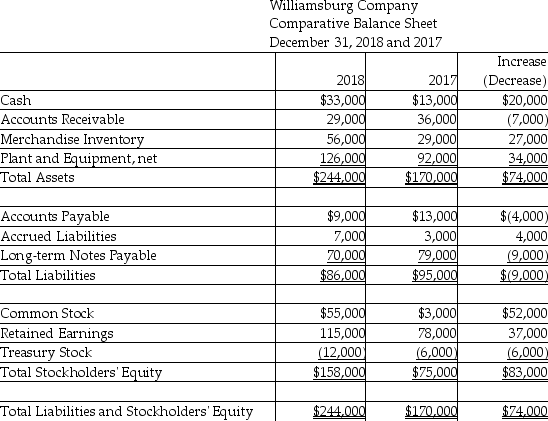Williamsburg Company uses the direct method to prepare its statement of cash flows. Refer to the following financial statement information for the year ending December 31, 2018:

Additional information provided by the company includes the following:
Equipment costing $60,000 was purchased for cash.
Equipment with a net asset value of $10,000 was sold for $16,000.
During 2018, the company repaid $43,000 of long-term notes payable.
During 2018, the company borrowed $34,000 on a new note payable.
There were no stock retirements during the year.
There were no sales of Treasury Stock during the year.
Prepare a complete statement of cash flows using the direct method.
Accrued Liabilities relate to other operating expenses.
Definitions:
Allowance Method
An approach in accounting that calculates expected losses from bad debts by assessing uncollectible accounts at the conclusion of each period.
Estimated Bad Debts
A provision in accounting for the amount of receivables that are expected not to be collected, considered an expense.
Accounts Receivable Turnover
A financial ratio indicating how many times a company's receivables are turned over during a period.
Specific Accounts
Refers to accounts designated for specific purposes or transactions, distinguishing them from general or combined accounts.
Q3: Which of the following transactions would be
Q17: Dental, Inc. uses the direct method
Q24: Which of the following corporate characteristics is
Q52: Define period cost. Give three examples of
Q71: Which of the following would be classified
Q93: Using the effective-interest amortization method, the amount
Q124: Lightning Electric Company uses the direct method
Q132: For a manufacturing company, which of the
Q153: Which of the following would be included
Q267: The declaration of a stock dividend creates